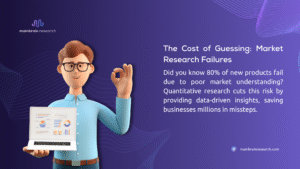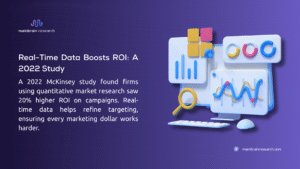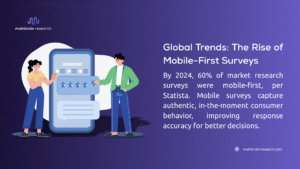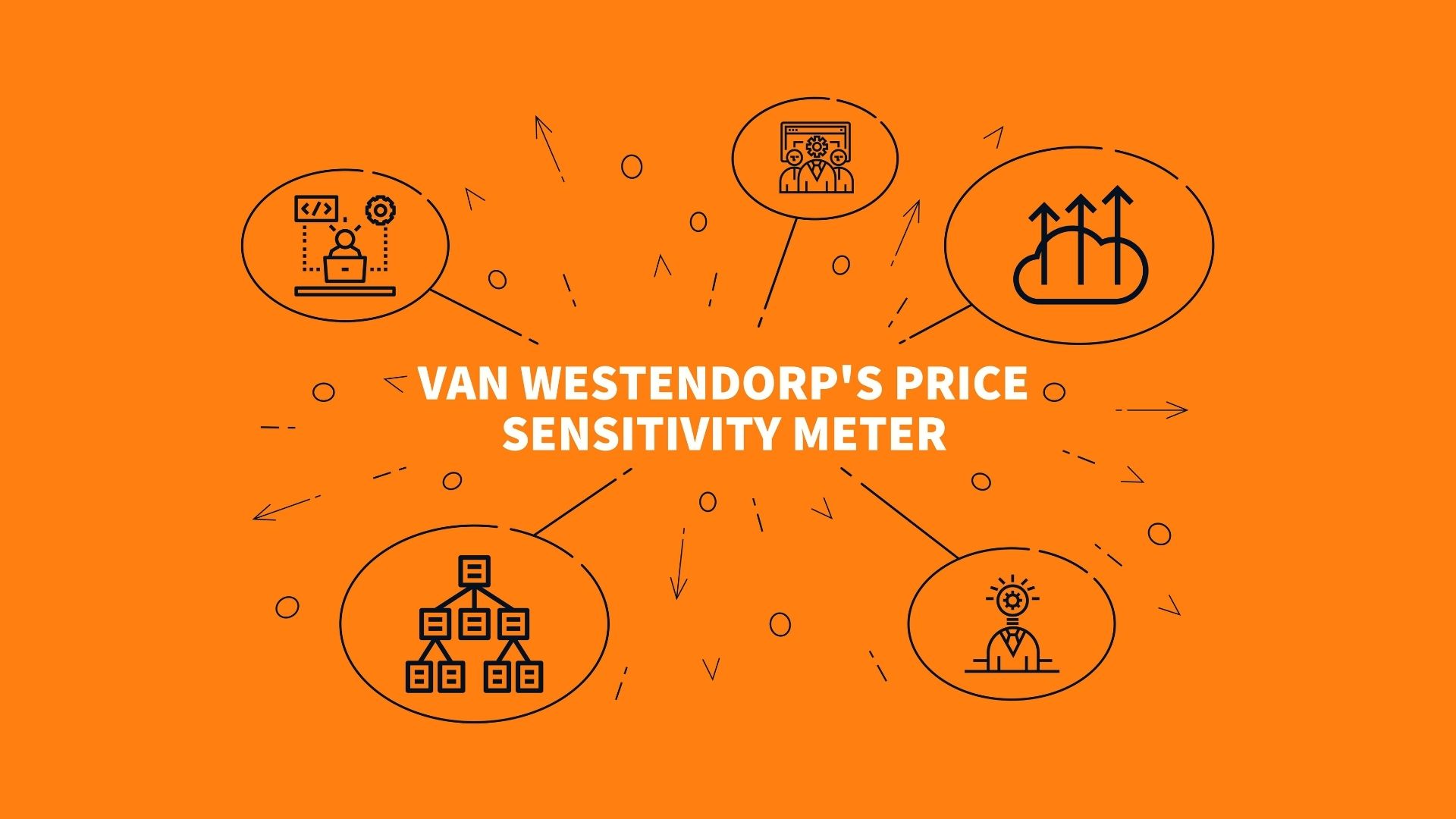Ask any entrepreneur who’s blown their budget on a product nobody wanted or watched their “brilliant” marketing campaign fall flat on its face.
Most business owners think they know their customers. They talk to a few people, check out some reviews online, maybe their sales guy mentions what he’s hearing. Then they make huge decisions based on maybe a dozen conversations. When things go south, they act all surprised.
This is exactly why quantitative market research exists. Here’s what it does: it tells you what’s actually happening in your market instead of what you hope is happening.
What This Stuff Actually Means
Okay, so quantitative market research sounds fancy, but it’s really just counting things and looking for patterns. Instead of asking five customers what they think, you ask 500. Instead of guessing how much people will pay, you test different prices with real money on the line.
Here’s the difference: your neighbor might tell you they love your homemade salsa and would totally buy it. That’s nice. But when you test it with 300 people and find out only 12% would actually pay $8 for a jar, that’s useful information. See the gap?
The whole point is getting past what people say they’ll do and figuring out what they actually do. People lie in surveys – not on purpose, usually, but they do. They say they care about the environment, but buy the cheapest option. They claim they’d pay extra for quality but go with whatever’s on sale.
Small business owners especially need this reality check. When you’re learning how to do market research for a small business, every mistake costs you. You don’t have Google’s budget to throw money at bad ideas and see what sticks.
The Ways That Actually Work Surveys (But Not the Terrible Ones)
We’ve all suffered through awful surveys. Twenty minutes of “rate your experience on a scale of 1-10” garbage that nobody cares about. The good ones are different – they’re short, they ask about real stuff, and they actually help you make decisions.
Good market research questions don’t ask “would you be interested in…” because everyone says yes to everything when it’s hypothetical. They ask “how much would you pay for…” or “when did you last…” – stuff people can answer honestly.
You’ve got options for how to run these things:
Online surveys work great if you can reach the right people. The problem is, most online surveys get filled out by bored college kids looking for gift cards. Not exactly your target market unless you’re selling energy drinks.
Phone surveys? Good luck with that. Nobody answers unknown numbers anymore. It might work for B2B stuff where you already know people.
In-person surveys cost more, but you get better responses. Plus, you can show people actual products instead of trying to describe them.
Mobile surveys catch people when they’re actually using your stuff or shopping. That’s when their answers mean something.
Testing Real Behavior
This is where it gets fun. Instead of asking people what they’d do, you watch what they actually do when money’s involved.
A/B testing is beautiful in its simplicity. Show half your website visitors one price, show the other half a different price. See which group actually buys more. No opinions, no maybes, just cold, hard purchase data.
The same thing works for everything else. Test two different email headlines – which one gets opened more? Try two product descriptions – which one gets people to click “buy”? Put up two different landing pages – which one converts better?
The beauty here is that people can’t lie to you because you’re measuring their actions, not their opinions. Someone might tell you they care about supporting local businesses, but when you test your “locally made” messaging against “save 20%,” the data shows you what they really care about.
Digging Through What You Already Have
Most businesses are sitting on piles of data they never look at. Sales records, website stats, customer service tickets, social media numbers – it’s all quantitative research if you know what to look for.
The restaurant finds out that customers who order appetizers come back twice as often. Online store discovers people who read reviews spend 40% more. Software company learns that users who finish the tutorial are way less likely to cancel.
This stuff costs nothing except time, and it often tells you more than expensive surveys ever could.
Different Surveys for Different Problems
Not all surveys are the same, and using the wrong type is like bringing a spoon to a knife fight. Understanding what is a market research survey is means knowing which tool fits your specific problem.
Customer satisfaction surveys tell you how you’re doing with current customers. Keep these short and focused on stuff you can actually fix. “How satisfied are you overall?” doesn’t help – “how long did you wait on hold?” does.
Brand awareness surveys check if people know you exist and how you stack up against competitors. There’s a big difference between people recognizing your name when they see it and actually thinking of you when they need what you sell.
Product development surveys help you figure out what to build next. Key thing here – test willingness to pay, not just interest. Everyone’s interested in cool features until they see the price tag.
Market segmentation surveys split your customers into groups that actually matter for your business. You might think you know who your best customers are, but the data often surprises you.
Pricing research figures out what people will actually pay instead of what you hope they’ll pay. Tricky to do right because people don’t always behave like they say they will.
When you’re looking at types of market research surveys, pick the one that answers your actual business question instead of just gathering interesting information.
Why This Matters for Your Bank Account
The benefits of market research aren’t abstract – they’re dollars and cents differences in your business performance.
The biggest thing is avoiding expensive screwups. How many products fail because nobody checked if customers actually wanted them? How many marketing campaigns flop because the message doesn’t resonate? How many pricing strategies backfire because they’re based on wishful thinking instead of data?
Then there’s finding opportunities you’re missing. Maybe your most profitable customers share traits you never noticed. Maybe there’s a whole market segment that wants your product, but you’ve been ignoring them. Maybe customers would pay more for features you’re giving away free.
Plus, optimizing what you’re already doing. Small improvements in conversion rates or customer retention add up fast. But you can’t improve what you don’t measure properly.
For anyone figuring out the importance of market research, here’s the bottom line: every business decision is a bet. Research just helps you make smarter bets with better odds.
Making It Work Without Going Crazy
Getting value from quantitative research is about being systematic and connecting your research to actual decisions you need to make.
Start with the decision, then work backwards to the research. What are you trying to decide? What would you do differently based on different answers? If you can’t answer those questions, you probably don’t need the research.
Sample sizes confuse everyone. Bigger isn’t always better – what matters is getting responses from people who represent your actual market. 300 responses from the right people beats 3,000 responses from random internet users every time.
Quality control matters more than most people think. Throw in a few simple attention checks to catch people who aren’t paying attention. Test your survey with a few people before sending it to hundreds. Set up basic rules to catch obviously fake responses.
Don’t try to get fancy until you’ve mastered the basics. Simple surveys that answer clear business questions are way more valuable than complex studies that produce interesting but useless insights.
Where People Mess Up
Even smart people make dumb mistakes with quantitative research. Knowing the common pitfalls helps you avoid wasting time and money on bad data.
Sample bias happens when your survey respondents don’t actually represent your target market. Surveying only existing customers when you need to understand potential customers. Getting mostly young people when your market is older. Attracting people who just want free stuff instead of people who actually buy.
Bad questions mess up everything. Leading questions that push people toward certain answers. Confusing questions that mean different things to different people. Hypothetical questions that don’t predict real behavior.
Analysis mistakes are super common. Thinking that correlation means causation. Assuming survey results from one group apply to everyone. Drawing big conclusions from small differences that might just be random.
Timing problems affect results in ways people don’t expect. Customer satisfaction right after purchase is different from satisfaction six months later. Seasonal businesses need to account for how timing affects attitudes and behavior.
Building Your Own Capabilities
You don’t need to hire a team of statisticians to do useful quantitative research. Most businesses can build basic capabilities internally and get external help for the complex stuff.
Focus on fundamentals first: writing clear survey questions, understanding basic statistics, and interpreting results correctly. Lots of good online resources for learning this stuff without going back to school.
Start with simple tools that match your current skills. Survey platforms for basic studies, spreadsheets for simple analysis. Upgrade to fancier software as your needs get more complex.
Document what you learn so you can build on it instead of starting over each time. Standard procedures help maintain quality as you do more research.
Partner with experts when you need specialized knowledge or want to make sure important studies are done right. A good way to learn best practices you can apply to future projects.
Making It Stick
Companies that get the most value from quantitative research make it part of how they normally do business instead of treating it like a special project.
Regular measurement of key stuff – customer satisfaction, brand awareness, market share – gives you baseline data to track progress and spot problems early.
Testing mindset means treating big decisions like experiments instead of just implementing whatever seems like a good idea. Test new features with some customers before rolling them out to everyone. Try different marketing messages with small groups before spending your whole budget.
Data-driven discussions replace arguments about opinions with conversations about evidence. When someone proposes a new strategy, the first question is “What data supports this?” instead of “Who likes this idea?”
Learning how to do market research effectively takes time and practice, but companies that make the effort consistently outperform competitors who keep making decisions based on hunches and hope.
Tired of Making Business Decisions in the Dark?
Look, your gut instincts got you this far, but they’re not gonna cut it anymore. While you’re debating what customers might want based on a handful of conversations, your smarter competitors are using real data to guide their product development, pricing, and marketing strategies.
Every quarter you spend making major decisions without solid quantitative research is another quarter of basically gambling with your company’s money. The cost of getting it wrong – products nobody buys, campaigns that don’t convert, opportunities you completely miss – way exceeds what proper research costs.
MainBrain Research gets it. We’ve helped hundreds of businesses stop guessing and start knowing through quantitative market research that actually produces actionable insights instead of just pretty charts for your next board meeting.
Need to validate that new product idea before you blow your development budget? Want to understand why customers keep leaving? Trying to figure out optimal pricing that maximizes profit without killing demand? We’ve got the experience and tools to get you real answers.
Stop flying blind. Get the competitive edge that comes from actually understanding your market better than everyone else.



















